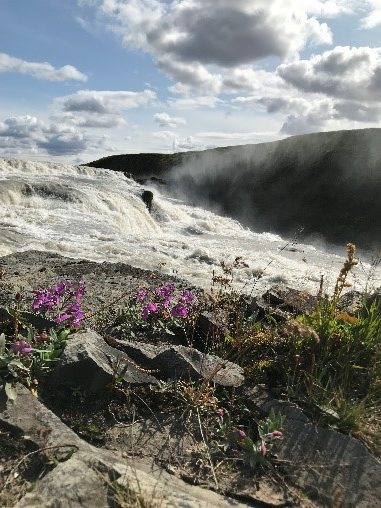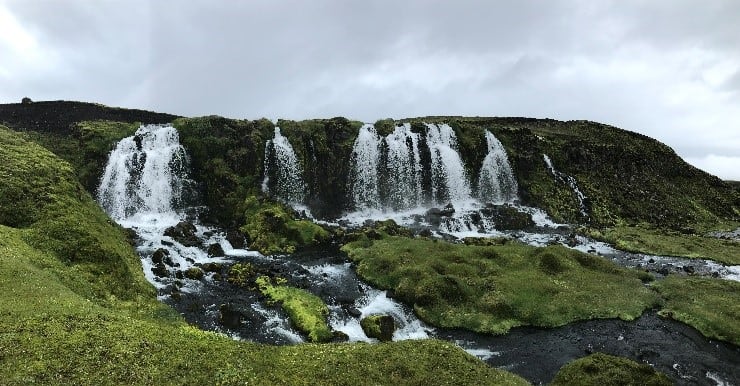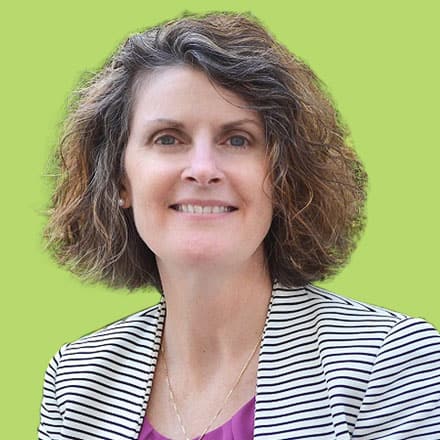Inside Angle
From 3M Health Information Systems
Waterfalls and data…don’t get submerged!
I recently had the pleasure of visiting Iceland, the location of my daughter’s destination wedding (at the base of a waterfall!) What a marvelous country. Most surprising were the waterfalls and not just the number, but the size of Iceland’s waterfalls! For those considering a trip, I highly recommend a visit there and thought I would share my “favorite” waterfall—Gulfoss.

With all of the regulatory updates, emails, webinars, newsletters, etc. to sort through, it is hard to stay current on what is important and what is merely interesting. If we had nothing to do all day but read the final rule, or dig into methodology on the AHRQ, CMS or CDC websites, we could stay on top of everything. However, we all have a job that probably has multiple tasks. With so much new data to sift through, I sometimes feel like a leaf floating on a river, suddenly plunged into the waterfall. How do I stay afloat? A few suggestions:
- Be knowledgeable about all the waterfalls that should be considered. Sign up for alerts and newsletters such as 3M HIS Inside Angle, Kaiser Health News, etc. Industry newsletters contain great bite-sized articles and usually offer quick summaries that will give you a hint about the content of each article. At a minimum read the summary, which will help you stay current on topics that are trending in health care. If interested, read the full article and if even more interested, dig deeper beyond the article!
- Look for the smaller waterfalls, not just the grand ones. Set aside an hour a week to read beyond your standard scope of research. You will often find great summary articles that may be all you need to update your knowledge set in five minutes or less.
- Don’t hike the entirety of every waterfall (although it’s so hard to stop once you get started.) It’s difficult for me not to do exhaustive research (or only hike the first of six kilometers of a waterfall) as I want to know everything down to the excruciating details. I do try to limit my knowledge base to the requirements of my job in order to avoid feeling overwhelmed.
- Divide up the waterfalls among the team. Plan out research to be done by each team member and ask for help when you start getting submerged. Side benefit: The person doing the deep research is learning about the content and knows you trust them with this important task. They can also become a subject matter expert, taking some of the pressure off you.
- List every waterfall needing exploration and pace yourself. Create calendar invites and/or block time for a specific task (such as writing this very overdue blog!).
- Use search engines to find key elements. For example, the IPPS Final Rule for this year is over 2,200 pages long. About 200 pages are of interest to me from a quality perspective, so I used the word search tool to find those sections and to further refine the sections for specific focus.
- After exhaustive research, share the knowledge to avoid duplication of efforts. One of my favorite hikes ever was at Grand Staircase in Utah (Peekaboo and Spooky slot canyons). I found out about this hike not by doing research, but by asking someone for a recommendation. Because they were willing to share, I knew where to go and had the best day of my entire trip.
- There is no such thing as too many waterfalls. They are all unique and beautiful in their own way. Be ever curious. I always have a browser open and use the search feature for questions when I am not 100 percent sure. Many times, I found what I thought I knew was actually wrong and by doing the research, I ensured I did not pass along incorrect information.
- Finally, come up for air. Every day I take 15 or 20 minutes to do NOTHING and let my brain reset. For example, I walk to the end of the block and back or look at pictures of waterfalls! Without that downtime, no more information can be processed by the packed temporary memory section of my brain. I often find that while taking a mental break, I am creative and can reprioritize if needed.
One last picture of another favorite waterfall, but I can’t divulge its name and location to protect its beauty!
Waterfalls (and data) can be wonderful as long as we aren’t submerged!
Cheryl Manchenton is a senior inpatient consultant and project manager for 3M Health Information Systems.
View our latest webinar on defining hospital-acquired infections (HAIs).



